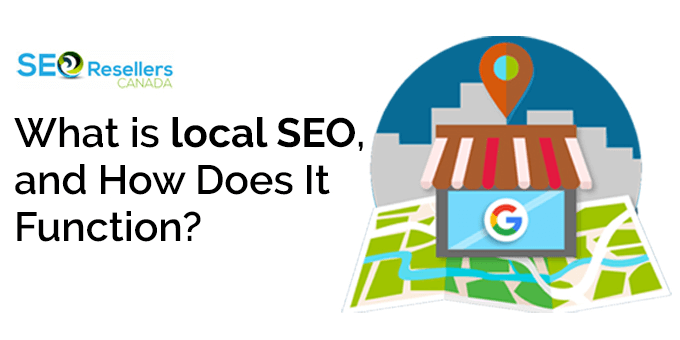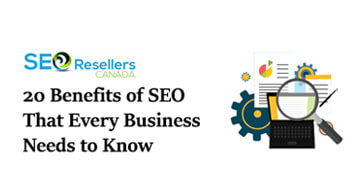On average, digital marketing is estimated to cost between $30,000 to $145,000 per year. Hence, it is natural for entrepreneurs, especially start-up owners, to find ways how to cut back on digital marketing costs.
Thankfully, White label SEO practices can prove of great help here.
Compared to paid marketing strategies, organic search costs next to nothing. And when done right, you will see a boost in organic traffic to your website in no time.
However, implementing SEO on-page best practices is easy said than done. This is particularly true if you have zero knowledge of SEO or lack the resources and relevant workforce to do so. In such cases, hiring link building company remains the only choice.
The experts at SEO agencies have relevant knowledge and access to tools, equipment, etc., to deliver services that benefit your business in the long run.
Listed below are 8 SEO best practices employed by expert agencies to boost website traffic organically.
1- Aligning the content with search intent
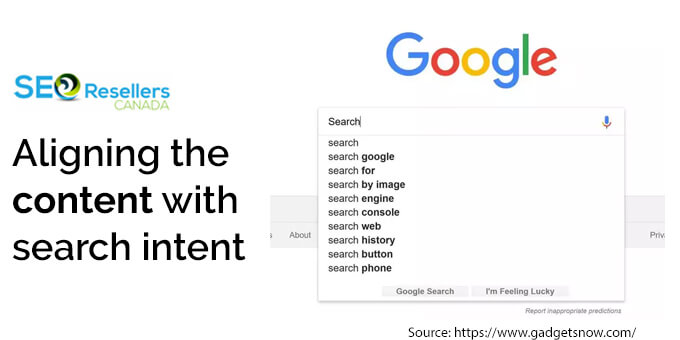
The purpose behind every search query is user intent, also known as search intent.
Search engines like Google’s ultimate priority are to comprehend and satisfy the search intents. For example, when you hunt the internet for “how to bake a chocolate chip cookie?” the result will feature videos and blogs that further talks about how to bake them and not of the websites that sell them.
Google comprehends quite well that people who have searched for this query are looking for ways to learn and not purchase.
Now, consider typing “buy chocolate chip cookies,” in the search engine and hit search. You are bound to find websites that sell your preferred cookies.
This time Google knew that the search intent was purchase; hence it displayed the same.
What this says is that if you wish to get ranked higher on Google, you will first need to comprehend the search intent and then produce content accordingly.
Search intent is further categorized into 4 parts including –
- Informational – This is when the user is just trying to learn something.
- Navigational – This type of search indicates that the user was searching for a specific website or page.
- Transactional This type of search indicates the user’s intention of completing an action. For instance, purchase.
- Commercial – This type of search informs that the user wishes to learn about a specific product before he/she decides to purchase it.
2- Developing compelling Meta descriptions and title tags
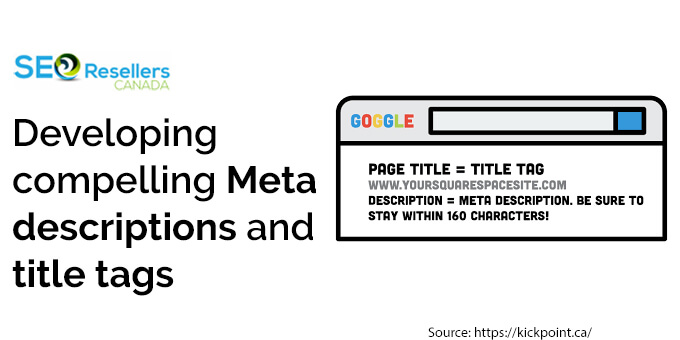
Every webpage must have two important meta tags; they are Meta Descriptions and Title Tags.
2.1- Meta Description
A meta description is added to provide a brief description of the content available on a page.
On search engines, meta descriptions often appear below the page title and URL.
If you wish to improve organic search traffic through a webpage, ensure that you create an informative, short, interest-invoking summary of what the said page is about.
Meta descriptions are like a promotional pitch that convinces the users to click on the page by providing a summary of what they might find on the page.
Since Google expects the meta descriptions to be between 155–160 characters, ensure the one you create is succinct and accurate. Here are some proven methods of crafting meta descriptions –
- Create an action-oriented and unique meta description for every page.
- Ensure to include the target keyword while matching the search intent.
2.2- Title tags
The title tag is the headline that you see and click on on the search engine result pages. They inform the search engines what your page is related to or talks about.
Title tags give the users a quick insight into the content they wish to click on.
Since title tags are considered the primary piece of information users use to decide which result they should click upon, it is imperative to create compelling titles for the web pages.
Ensure to keep the word count for title tags between 50 to 60 characters, thereby preventing it from cutting off on both mobile and desktop SERPs. Here are some 2022 SEO best practices for creating an effective title tag –
- Ensure to add the target keyword while matching the title with the search intent.
- Avoid keyword stuffing and adding duplicate title tags.
- Keep the title tags descriptive and concise.
3- Optimizing the images on the website
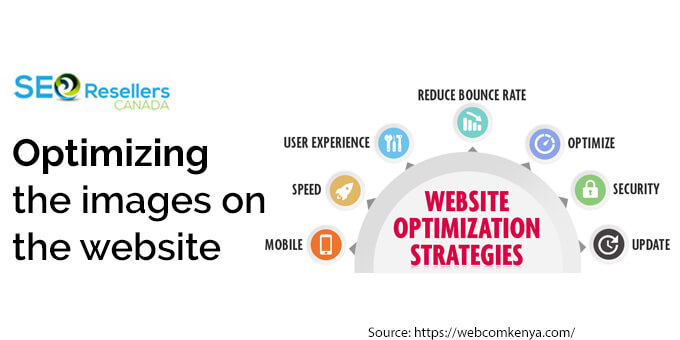
You might know that images play a key role in boosting user experience. But did you know a well-designed and well-placed image can assist with the website’s overall SEO strategy and improve organic traffic ? Well, yes, it can, and listed below are ways to optimize the images on the website to make the most out of them –
3.1- Pick the best image format
Images have the capability of impacting the overall page’s loading time. And since page speed is a crucial ranking factor, ensure you have the right-sized image added to the site.
Start by picking the best image format.
PNG and JPEG files are commonly used for website needs. However, both have different compression techniques, meaning there is a huge difference in the file size. For instance, JPEG typically has a smaller file size, which can make people assume it is the best.
While JPEG looks good, PNGs can suit well when the image features text, line drawings, etc.
WebP is yet another new and popular choice for website images. Compared to PNG, the WebP lossless image is 26% smaller in size and around 34% smaller than a comparable JPEG image. Google also has a guide that details how to use WebP images effectively.
3.2- Don’t forget to compress the image
To ensure the images don’t hinder the page’s loading speed, they are compressed to minimize the size without impacting quality.
Hence, it is important that you compress the image before you decide to upload them to the website. Tools like TinyPNG, ImageOptim and ShortPixel can help compress the image.
3.3- Give the image an alt text
Alternative text or alt text is text that you can include in the HTML code to better describe an image to the search engines. Even those viewing the page with a screen reader can benefit from you adding alt text to the image.
Even though Google is highly advanced in comprehending images, adding alt text is still considered an imperative requirement.
These best alt-text practices can come handy –
- Maintain the word count under 125 characters
- Add one keyword for context
- Steer clear from adding words like “picture of” or “image of” in your alt text
3.4- Perhaps lazy-load the image
Lazy-loading is a process that prevents the loading of a non-critical image at the page loading time. The images or videos only get loaded when the users require them.
Google has a guide that states that while it loads a lazy-load image or video, it reduces the initial page loading time, system resource usage and initial page weight, thereby boosting the performance.
4- Tweaking the website’s speed
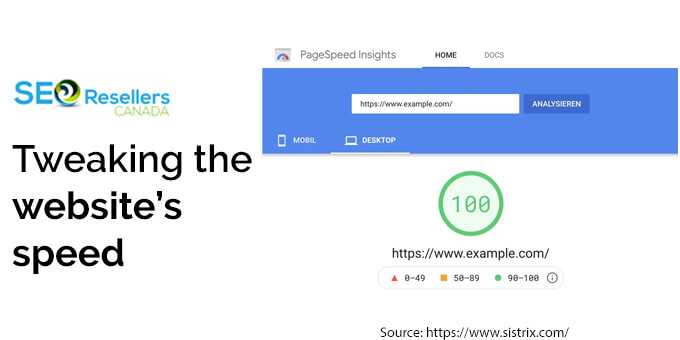
A website’s loading speed is a primary ranking factor used by Google, especially when it comes to the site’s accessibility through the mobile device.
So, if you wish to know how to boost organic traffic to your website, ensure you determine your website has a good loading speed – one that users and Google appreciates.
Consider using Google’s free tool PageSpeed Insights to analyze the overall speed of your site. It should provide you with a detailed report that even suggests ways to improve the speed.
5- Focusing on the internal linking structure
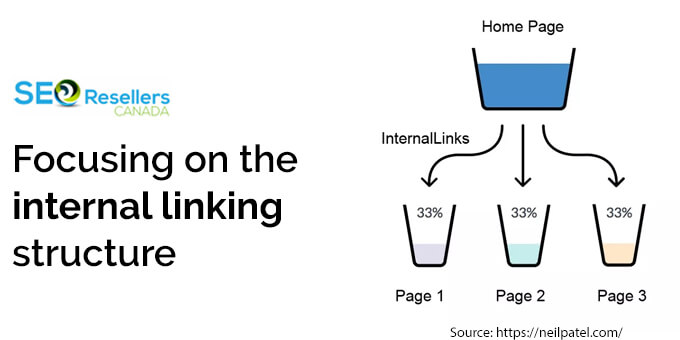
Internal linking is crucial as it helps develop an information hierarchy for the website. It also assists Google in comprehending the content of your page.
When used properly, internal linking SEO best practices can help boost the website’s ranking on search engines, too.
One of the best internal linking best SEO practices is adding internal links from well-established and top-ranking pages of your website to pages that require the boost. This typically means linking old pages to new ones, given that old pages tend to have better authority.
While linking new pages with old ones can prevent you from analyzing every page on your site, it is still a sound choice to check for internal linking errors, as they can be damaging to your best SEO practices 2022.
SEO agencies tend to use paid tools like Site Audit tool to create a comprehensive internal linking report.
6- Earning authoritative backlinks
Backlinks are typically recognized as votes of confidence from other established sites to yours. With a higher number of authoritative backlinks, you improve your website’s chances of being ranked higher on search engine result pages (SERPs).
This means earning authoritative backlinks is the straightforward answer to your question, “how to improve organic traffic to my website?”
However, keep in mind that not all backlinks are generated equally. Some have the potential to improve your organic traffic, while others may be downright toxic for your website. Hence, your focus should be on building high-quality backlinks that can enhance your chances of getting ranked better for targeted keywords.
You can replicate your competitor’s backlinking strategies to obtain authoritative backlinks. There are many backlink analytics tools available in the market that allows you to enter your competitor’s domain to create a report that defines the number of referring domains to the site.
To create content SEO best practices from this report, consider looking for patterns in the topic, format, length and style of the pages.
Determine –
- What do your competitors usually write about?
- Does the site feature more long-form content or short?
- Does the content feature visual assets?
Finding answers to these questions might help you replicate what can work better and in a similar way for your website.
7- Producing valuable content for the site
Yet another answer to your question, “how to improve organic search traffic?” is creating and posting helpful, original content on the website – one that impresses, informs and engages the end user. Adding useful content on the site can also help in ranking higher on SERPs.
Keep in mind content length will not always matter. What matters the most is your content’s ability to solve user problems and queries. Your content must share information and be valuable to the targeted readers.
The best way to make the most out of your content marketing local SEO best practices is by finding topics that are already trending in the market. And then focus on creating content with the latest perspective, new angles and data.
8- Improving user experience and making URLs SEO-friendly
Google tends to closely monitor how users engage with the page. Hence, user experience (UX) becomes yet another key factor in ranking a page or website. Besides page speed, there are other vital elements that need to be taken care of to improve the overall user experience.
These include –
- Correct usage of headers and subheadings, thereby enabling Google to comprehend your content better. These elements also make the text more accessible to the end readers.
- Adding images, videos, infographics, etc., to help get your point across. Visuals, in any format, help the readers comprehend the content a little better.
- Intrusive pop-ups have been deemed annoying by Google since 2017. So, avoid using them at all if you do not wish to get penalized by Google.
- White spaces help in boosting the branding, legibility and focus on the end users of the brand. Hence, make white spacing a fundamental need of your website design and content.
- Making a website mobile-friendly is one of the many SEO best practices that you cannot overlook, given Google uses mobile-first indexing.
The next focus should be on making the URLs SEO-friendly. Why? Well, a good URL structure provides search engines and users with a vague idea of what the final page is about. Make the URL structure most intelligible for humans by organizing the content properly, thereby allowing a more logical construction of URLs.
Here are some things you can do to create structurally sound URLs.
- Focus on creating short URLs as they tend to outperform long ones.
- Ensure to add the keyword in the URLs to boost your chances of ranking better.
- Ensure to add categories or subfolders if required. For instance, your blog page can have a URL like www.example.com/blog. And when one of the blogs from the blog page is clicked that talks about food catering tips, the URL can be www.example.com/blog/food-catering-tips.
9- To conclude
It is evident from the blog that SEO best practices employed by expert agencies end up creating a solid foundation for the brand. This foundation also makes it easy to dive into new and advanced search engine approaches that you mind need down the line.
So instead of stressing over “how to improve organic search traffic to my website?” consider speaking with an expert SEO Resellers Canada. Based on your industry niche, expectations and budget, the experts will be able to produce a solid SEO strategy to boost the quality and quantity of organic traffic to your website.












